There’s a distinct pleasure in wandering without purpose, allowing curiosity to guide your footsteps through unfamiliar streets. While Europe’s grand cities offer structured sightseeing, its villages provide perfect settings for unhurried exploration, where the journey itself becomes the destination, and every turned corner brings unexpected delight.
Here is a list of 20 European villages where aimless wandering rewards visitors with authentic experiences, architectural surprises, and the quiet joy of discovery that comes from having absolutely nowhere in particular to be.
Hallstatt, Austria

Wedged between mountains and a lake, this Alpine village creates a natural wandering circuit where getting lost is nearly impossible, yet discovery feels endless. The narrow lanes wind upward from the lakeshore, revealing colorful centuries-old homes built by salt miners, stacked almost vertically due to limited space.
Morning walks reveal local life before day-trippers arrive, with residents tending window boxes and fishermen setting out as they have for generations. Evening strolls offer magical lighting as the village reflects in the still water.
Oia, Santorini, Greece

The whitewashed maze of Oia invites purposeless exploration, with stairs and pathways that seem to lead simultaneously nowhere and everywhere. Each turn reveals new perspectives of the caldera below, framed by blue-domed churches and cascading architecture that follows the cliff’s contours.
The changing light throughout the day transforms the village’s appearance, making the same route walked at different hours feel like an entirely new experience.
Like Travel Pug’s content? Follow us on MSN.
Portmeirion, Wales
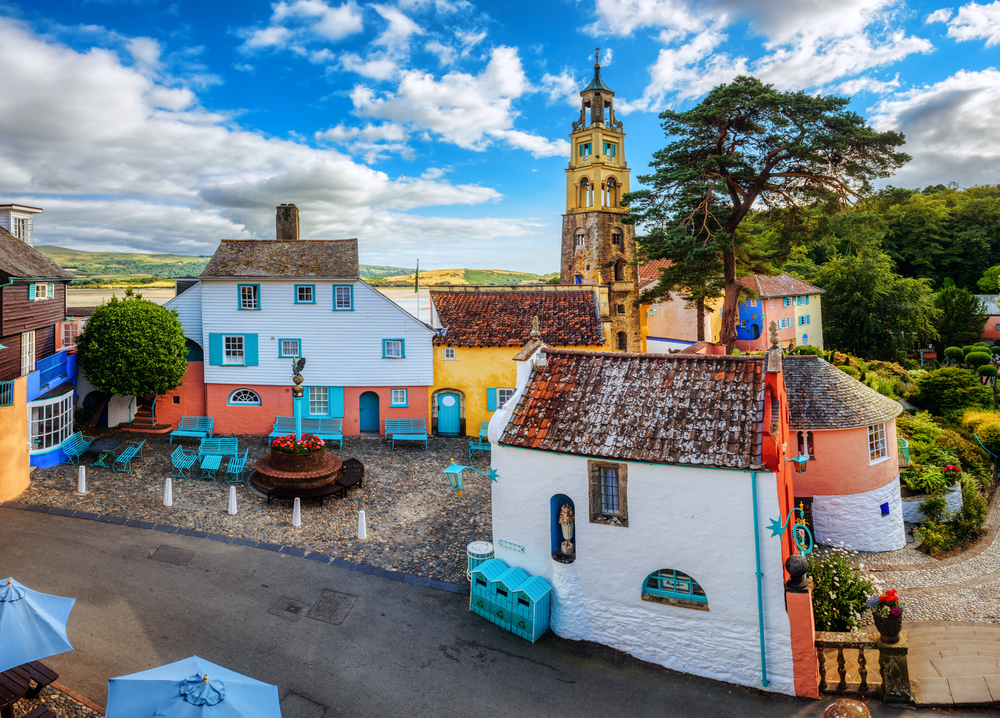
This fantasy village, designed by architect Sir Clough Williams-Ellis, combines Italian Renaissance influence with Welsh coastal scenery, creating an environment for whimsical wandering. Around corners, colorful buildings in unexpected architectural styles appear, while hidden gardens and ornamental ponds reward those who follow unmarked paths.
The surrounding woodland trails offer natural extensions to village wandering, with surprises like a Ghost Garden and an oriental temple emerging from the forest.
Albarracín, Spain

Perched dramatically on a rocky outcrop, this medieval village maintains its original street pattern designed for defense rather than navigation, making it perfect for directionless exploration. The distinctive reddish-pink buildings match the surrounding mountains as lanes narrow to shoulder width and then suddenly open to reveal small plazas with panoramic views.
Local cats often serve as unofficial guides, leading curious visitors up unmapped staircases to viewpoints overlooking terracotta rooftops and the surrounding river gorge.
Český Krumlov, Czech Republic

The meandering Vltava River loops around this UNESCO-protected village, creating natural wandering circuits that change perspective with each bridge crossing. Medieval passageways connect courtyards hidden within the old town, where small workshops practicing traditional crafts welcome impromptu visitors.
The castle gardens provide elevated wandering routes with new vistas around each hedge, while the riverside paths offer glimpses into everyday life as locals fish from centuries-old stone embankments.
Like Travel Pug’s content? Follow us on MSN.
Anghiari, Italy

Dramatically positioned on a hillside in eastern Tuscany, this walled village features steep stone streets that seem to cascade down the slope, creating natural wandering routes where gravity does the navigating. The medieval layout includes numerous tiny alleyways called vicoli that sometimes pass under buildings, emerging into unexpected sunny piazzas where locals gather around fountains.
The massive 13th-century walls offer a high-level circuit around the entire village, providing both orientation points and spectacular views across the Tiber Valley.
Rochefort-en-Terre, Brittany, France
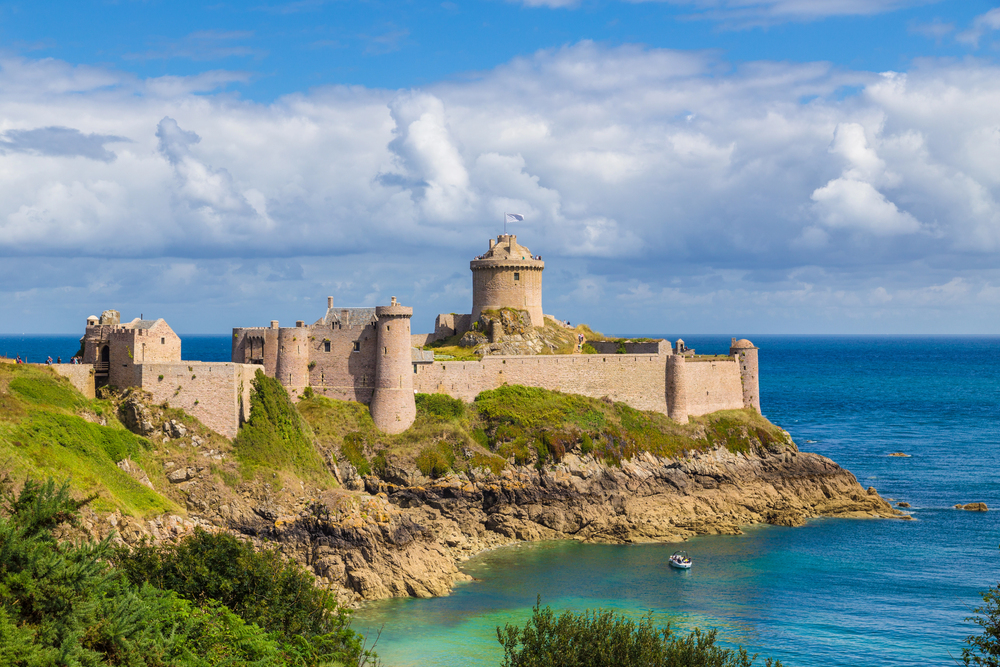
This granite village comes alive in summer with geraniums cascading from window boxes, creating natural splashes of color that draw wanderers from one picturesque corner to the next. Half-timbered buildings lean toward each other across narrow lanes, sometimes nearly touching overhead to create tunnel-like passages that open suddenly into light-filled squares.
Evening walks reveal why the village earned its reputation for exceptional lighting, as strategically placed lanterns create golden pools that transform ordinary corners into theatrical settings.
Bibury, England

William Morris called this Cotswold village “the most beautiful in England,” with its honey-colored stone cottages and gentle river setting creating a landscape that encourages meandering exploration. The famous Arlington Row weaver’s cottages form just one small part of the village, with equally charming areas waiting to be discovered along unmarked footpaths that follow ancient boundaries.
Dawn walks through the water meadows, offering glimpses of trout in crystal streams and often mist rising from the river, creating an ethereal quality that transforms familiar scenes.
Like Travel Pug’s content? Follow us on MSN.
Thatched villages of Telemark, Norway
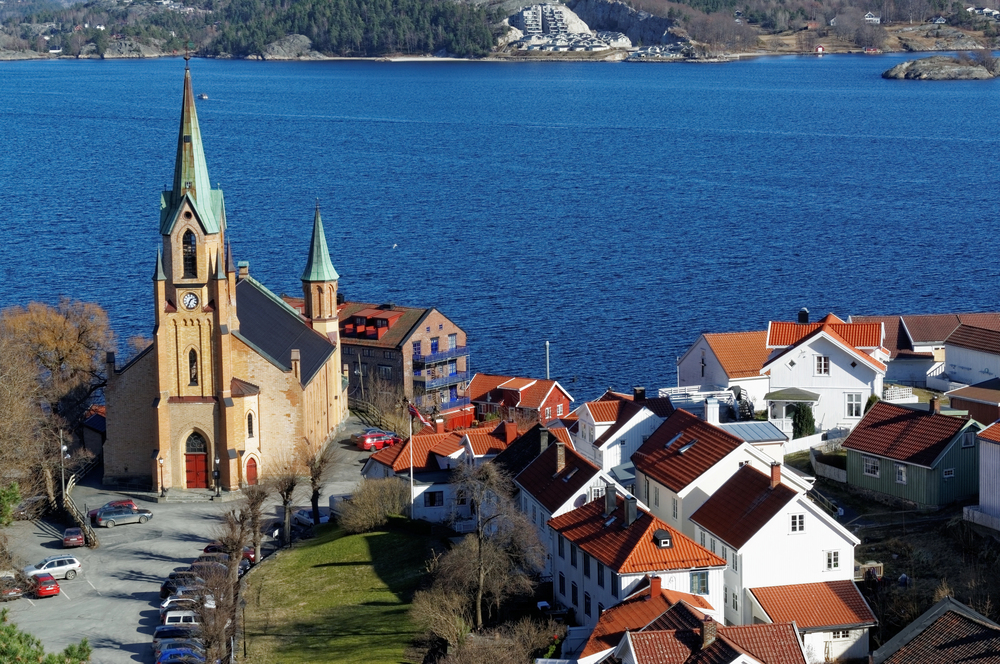
The connected farm villages of Telemark feature traditional wooden architecture with distinctive decorative elements that change subtly from one hamlet to the next, rewarding those who wander between them. Grassy rooftops bloom with wildflowers in summer, creating elevated gardens that visually connect buildings to the surrounding landscape.
Weathered wooden stave churches emerge unexpectedly from forest clearings along walking routes, their dragon-head decorations and intricate carvings demonstrating the region’s blend of pagan and Christian artistic traditions.
Monsanto, Portugal
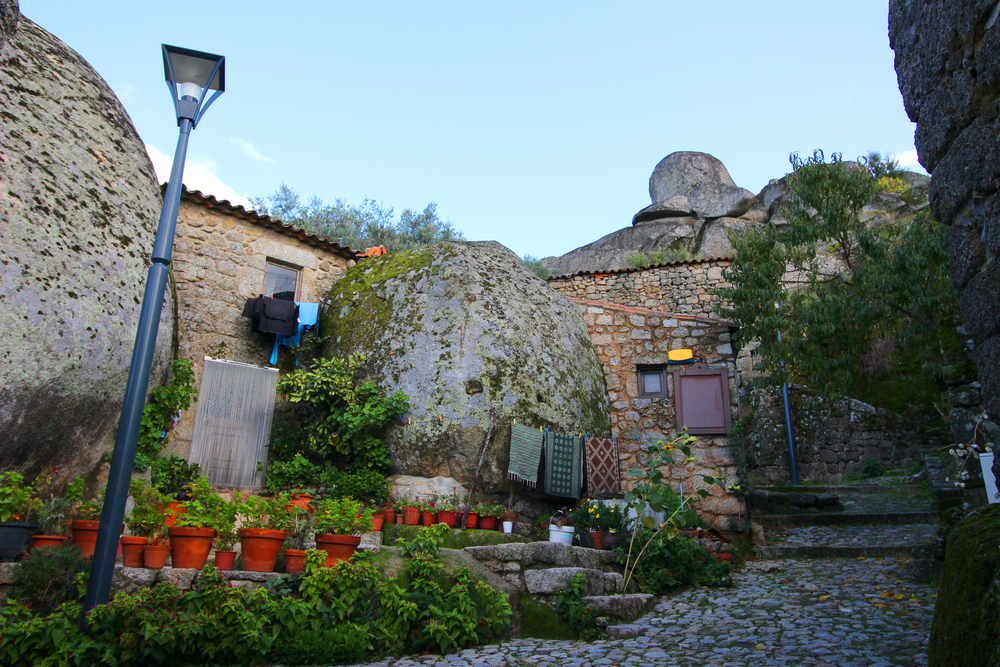
Built among enormous boulder formations that dictate both the village layout and individual building designs, Monsanto creates a three-dimensional wandering experience unlike anywhere else in Europe. Houses incorporate the massive granite boulders directly into their construction, sometimes using them as walls or roofs, creating an organic architecture that grows from the mountainside.
Narrow passages squeeze between rocks to emerge at panoramic viewpoints, while stairways carved directly into stone lead to neighborhoods balanced improbably on rocky outcrops.
Eze, France
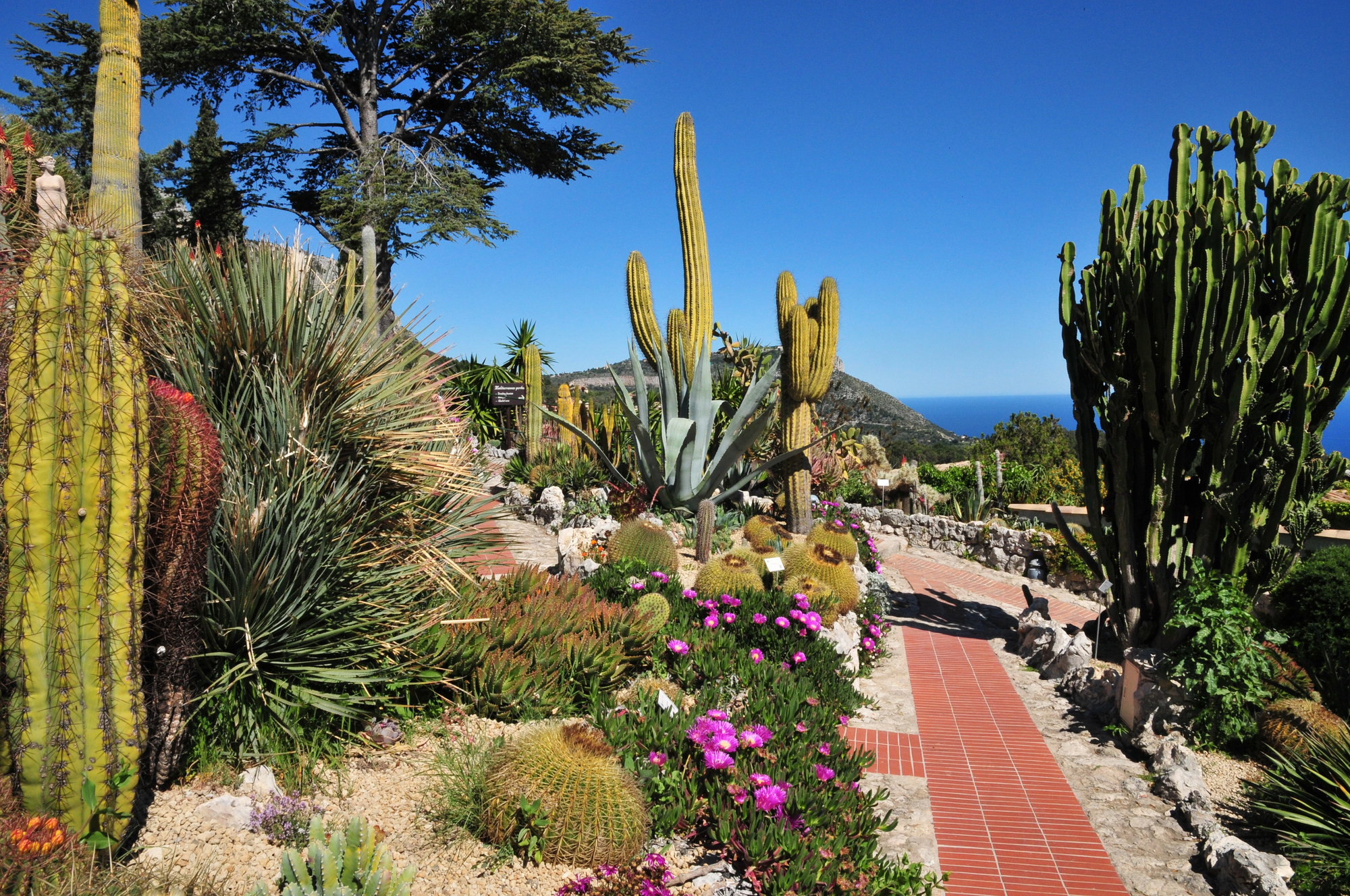
Perched between mountains and the Mediterranean, this medieval village consists almost entirely of stone staircases and tiny passages that spiral upward through perfume shops and art galleries housed in ancient buildings. The exquisite cactus garden at the village summit provides both a destination and an orientation point for wanderers in the labyrinthine streets below.
Morning exploration reveals delicate stone carvings and architectural details missed by afternoon visitors, while evening walks offer the spectacle of twinkling lights along the Côte d’Azur stretching toward Monaco.
Like Travel Pug’s content? Follow us on MSN.
Rothenburg ob der Tauber, Germany
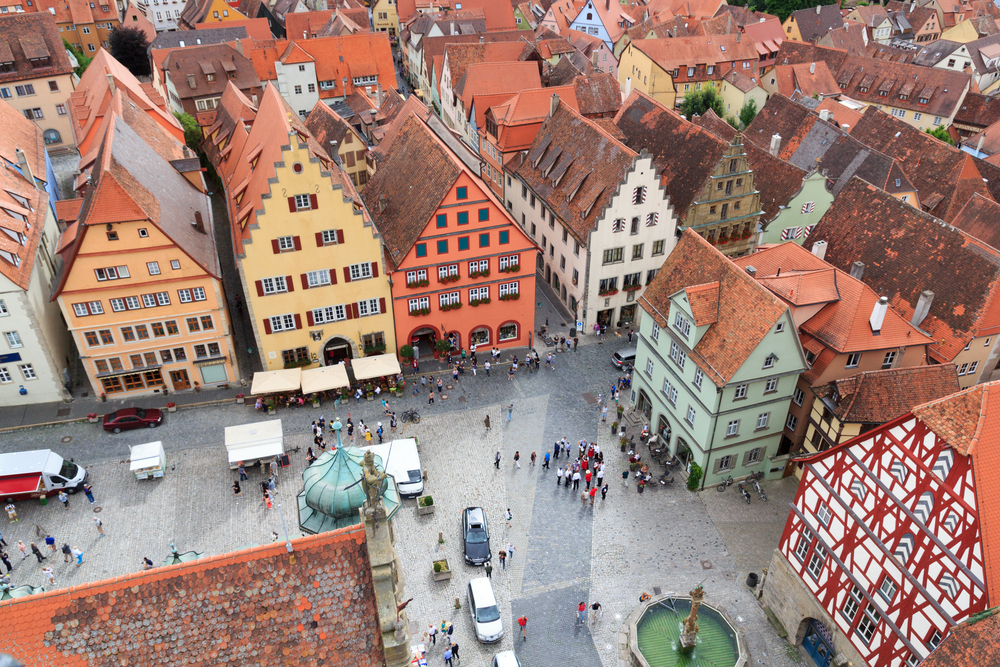
Surrounded by intact medieval walls with covered walkways, this remarkably preserved town creates natural circuitous routes that encourage exploration from different elevations. The cobblestone streets follow a pattern established in the 12th century, with buildings leaning inward and numerous fountains marking small plazas where lanes intersect.
Pre-dawn walks reveal the village much as it appeared centuries ago, with lanterns casting shadows across ancient stone walls and night watchmen still conducting tours using traditional songs to mark the hours.
Korcula Old Town, Croatia
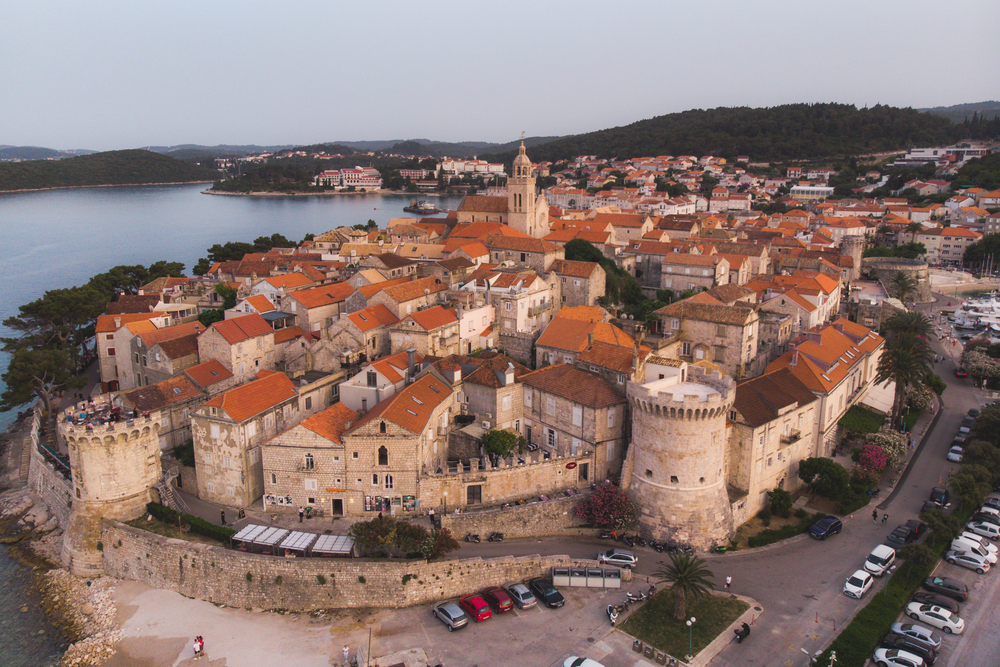
Built on a small peninsula with a fishbone street pattern designed to provide natural cooling, this walled village creates a perfect wandering environment where sea views appear unexpectedly at the end of narrow alleys. The stone buildings feature distinctive Venetian Gothic windows and carved balconies that reward upward glances while strolling the polished stone streets worn smooth by centuries of footsteps.
Evening brings a magical transformation as amber lighting reflects off the stone pavers, creating an atmosphere that explains why locals often claim Marco Polo was born here rather than in Venice.
Dinkelsbühl, Germany

Less visited than other German medieval towns, Dinkelsbühl’s exceptionally well-preserved town walls enclose colorfully painted buildings that line streets still following their 13th-century layout. The late afternoon light creates a golden glow on the distinctive half-timbered architecture, while the lack of crowds allows visitors to hear church bells echoing across the town exactly as they have for centuries.
The Romantic Road passes directly through the village, but the most rewarding exploration happens on the unnamed lanes connecting hidden courtyards and garden plots cultivated since medieval times.
Like Travel Pug’s content? Follow us on MSN.
Obidos, Portugal

Encircled by crenelated walls that visitors can walk atop, this whitewashed village climbs a hillside with a castle crowning its highest point, creating natural exploration routes with constantly changing perspectives. Bougainvillea and wisteria cascade over garden walls along narrow streets too slim for vehicles, their fragrance mixing with the scent of ginjinha, the local cherry liqueur traditionally served in chocolate cups.
The village transforms seasonally with festivals that decorate its winding lanes, from medieval markets to literary celebrations where books appear in unexpected places throughout the village.
Gruyères, Switzerland
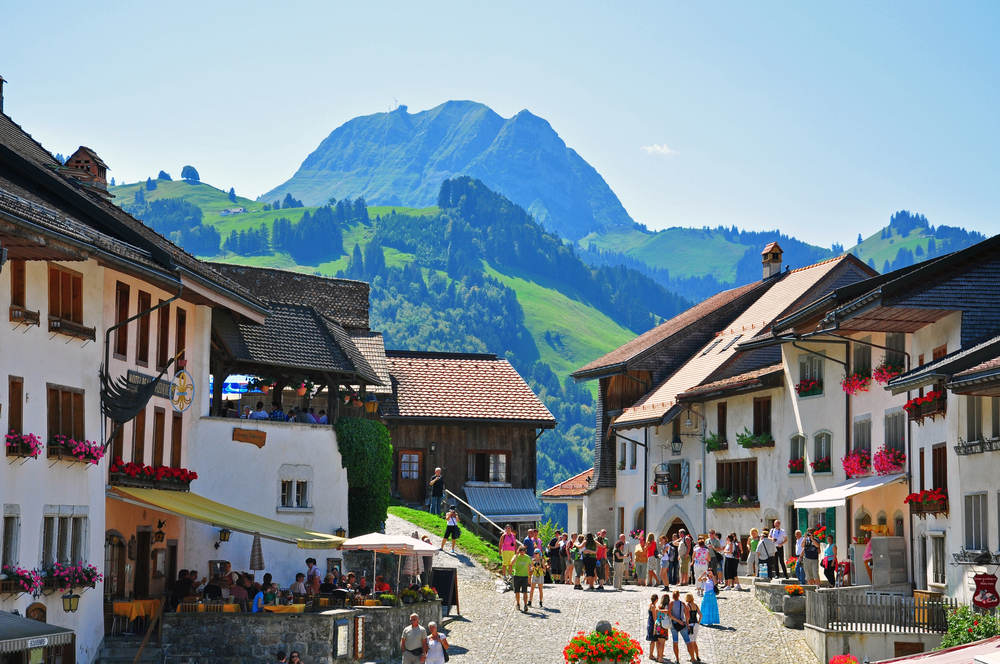
Protected from vehicle traffic, this medieval hilltop village centers around a single cobblestone street that winds past 15th-century buildings to a fairy-tale castle, creating a natural wandering route with magnificent Alpine views. The village exists in curious harmony with its cheese-making heritage, with traditional dairies operating alongside museums dedicated to the artist H.R. Giger of Alien fame, creating unexpected juxtapositions around every corner.
Morning mist often shrouds the surrounding mountains, creating an ethereal atmosphere for early wanderers who have the village practically to themselves.
Fornalutx, Mallorca, Spain
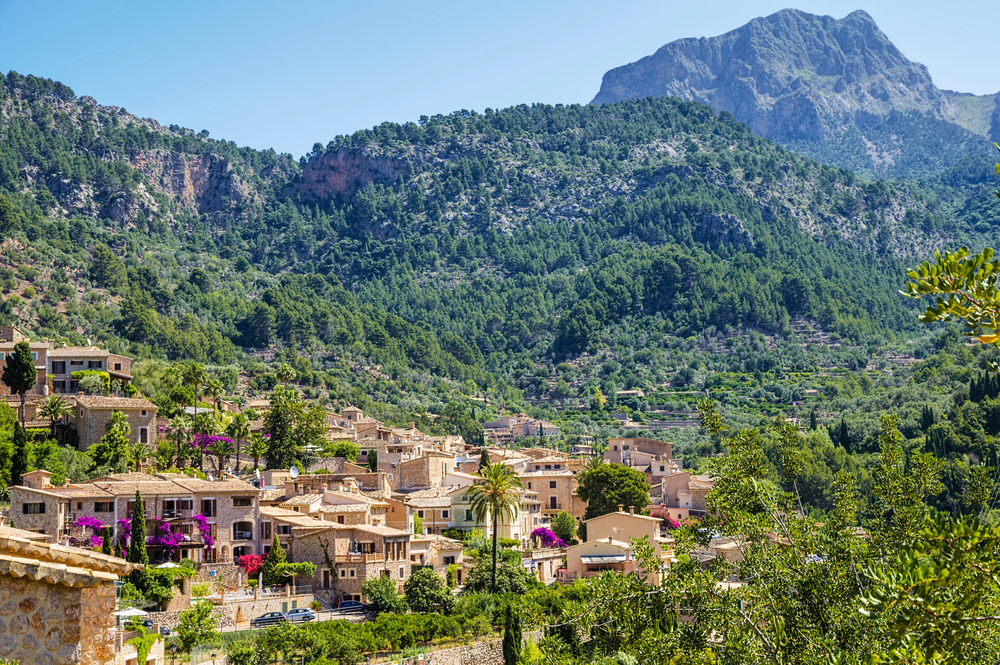
Stone stairs connect the various levels of this hillside village in Mallorca’s Tramuntana mountains, creating vertical exploration routes through neighborhoods perfumed by citrus trees growing in protected courtyards. Ancient water channels that have been functioning since Moorish times create pleasant background sounds while wandering the steep passages, where painted ceramic tiles mark house numbers and traditional symbols protect doorways.
The surrounding agricultural terraces constructed over centuries extend the wandering experience beyond the village center, with stone paths connecting olive groves and orange orchards still maintained using traditional methods.
Like Travel Pug’s content? Follow us on MSN.
Yvoire, France
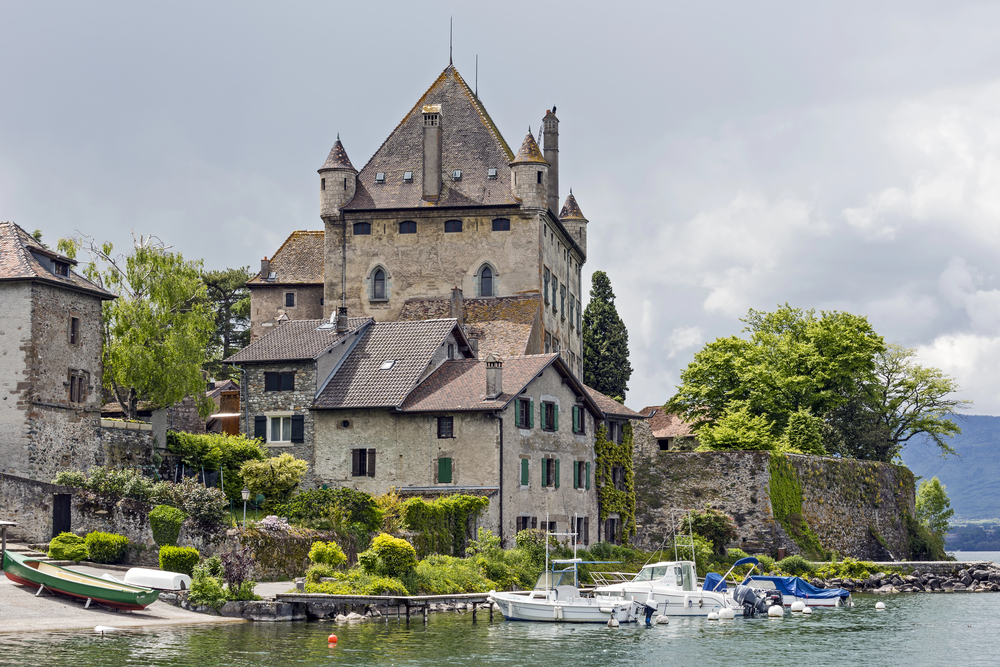
This medieval fishing village on Lake Geneva has maintained its 14th-century walls and fortified gates, creating natural boundaries for wandering its carefully preserved streets. The village has embraced its “Garden of Five Senses” theme with aromatic plantings throughout its public spaces and private gardens visible through ornate wrought iron gates.
The contrast between stone architecture and abundant flowers creates distinct wandering experiences through the seasons, while the constantly changing light on the lake transforms familiar views throughout the day.
Marvão, Portugal

Perched at 2,800 feet on a granite crag, this fortress village provides panoramic views across Portugal and Spain from its fully intact medieval walls. The village consists of whitewashed houses with granite trim lining narrow streets that follow the contours of the mountaintop, creating natural viewpoints around every bend.
The border location created a distinctive architectural blend of Portuguese and Spanish influences, with subtle details revealed only to those who wander slowly through the village rather than heading directly to obvious attractions.
The Medieval Villages of Cinque Terre, Italy

The five connected fishing villages clinging to Italy’s Ligurian coast offer perhaps the ultimate European wandering experience. Hillside pathways link distinct communities, each worthy of aimless exploration. Each village features distinctive architectural elements and color schemes, from Manarola’s rainbow-hued buildings clustering above its tiny harbor to Vernazza’s natural piazza opening directly to the sea.
The famous hiking path connecting all five villages encourages purposeful walking between them. Still, the true magic happens when abandoning designated routes to follow unmarked staircases through vineyards and olive groves above the villages.
Like Travel Pug’s content? Follow us on MSN.
The Slow Discovery

These villages remind us that the most meaningful travel experiences often happen when we abandon itineraries and surrender to curiosity.
In an age of GPS-guided efficiency and “must-see” checklists, these ancient communities offer something increasingly precious—environments designed before the concept of destinations, where the journey itself provides the richest rewards. The art of walking nowhere in particular, it turns out, often leads exactly where we need to go.
More from Travel Pug

- Cities Growing so Fast You Won’t Recognize Them in 10 Years
- 13 Destinations Where Tourists Regularly Regret Their Trip
- 20 Obscure WWII Sites Even History Buffs Don’t Know About
- 10 Under-the-Radar Mountain Towns That Are Both Affordable and Beautiful
- Remote Villages in Europe Where You Can Live for Free in Exchange for Work
Like Travel Pug’s content? Follow us on MSN.
